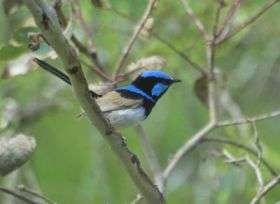Mother's little helpers

An Australian bird has been found to produce smaller, less nourishing eggs when it breeds in the presence of other ‘helper’ birds that provide child-care assistance. This unique adaptation enables the birds to live longer and breed more often than females without helpers. The research, led by a University of Cambridge academic, today made the front cover of Science.
In many animal species, parents caring for their offspring are assisted by so-called ‘helpers’, adults that forego reproduction to help others raise young. Although parents decrease the amount of food they provide to offspring when helpers are present, the additional supply provided by the helpers more than compensates for this reduction. As a result, chicks fed by parents and helpers tend to receive more than those raised without helpers.
However, research has shown that these offspring who receive additional food do not appear to gain any advantage as a result. This has raised the question of who really gains from helping behaviour – a question that has baffled scientists until now. Research reported today on a common Australian bird species has provided a novel answer.
Researchers have discovered that in the ‘superb fairy-wren’ (Malurus cyaneus), mothers benefit more from helping behaviour than their offspring. As helpers provide chicks with a significant amount of additional food, mothers can afford to skimp on nourishing their eggs. Females that are assisted by helpers were found to lay smaller eggs with disproportionately smaller yolks, thereby saving energy during egg laying. As a result, they live longer and breed more often than females with no helpers.
The scientists predict that this phenomenon occurs in other cooperative breeding bird species.
“Helper birds offer mothers a form of child-care”, says Dr Rebecca Kilner from the University of Cambridge’s Department of Zoology, one of the leaders of the research team that made this discovery. “In this species, mothers effectively steal the child-care from their current brood and spend this energy on producing more young in the future.”
Superb fairy-wrens sometimes breed as pairs, and sometimes as pairs assisted by between one and four helpers. Helpers are always male and often sons from previous breeding. Females are drab brown in colour, but males moult into a striking blue plumage to breed, hence the species’ superlative name.
Source: University of Cambridge
















